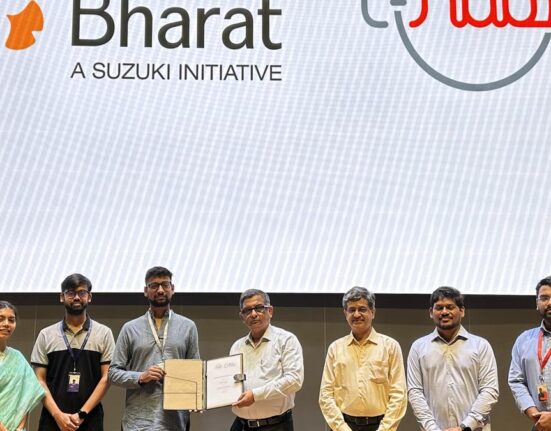Meet SiC and GaN: Answer to More Efficient Alternatives to Silicon
- by Nikhil Jha
- 3 January 2025
- 5 minutes read
One thing that has ruled the semiconductor industry for decades has undoubtedly been silicon. However, as the industry seems to be getting challenged from low-power high switching devices and the death of Moore’s Law, the demand for more efficient alternatives to silicon is at its greatest.
Somewhere, this search for finding a more efficient alternatives to silicon is getting its answer from two compounds: Silicon Carbide (SiC) and Gallium Nitride (GaN).
Well, I am not saying this in airs; for the last two decades, these two compounds have demonstrated superior performance compared to conventional silicon-based metal-oxide semiconductor field-effect transistor (MOSFET) devices and thus have become favourite choices for semiconductor researchers. Again, I am not saying this; the data obtained from the industry is showing.
At one side where the market size of the SiC market, once valued at $2.80 billion in 2022, is projected to reach $5.8 billion by 2032, growing at a compound annual growth rate (CAGR) of 7.5%, on the other side, the GaN market, currently valued at $2.6 billion, is projected to reach $16.6 billion by 2032, growing at a CAGR of 22.7%.

What Makes SiC and GaN Unique?
There are various factors that contribute to the uniqueness of these compounds, but higher bandgaps, reduced stray capacitances, and lower gate losses are the notable ones. Just to give you the reference, Si has a bandgap of 1.12 eV (electron-volts).
SiC and GaN feature bandgaps of 3.26 eV and 3.4 eV, respectively, which approximates to three times that of silicon, enabling them to have a broader range of p-type and n-type control, crucial for device manufacturing.

Also, higher bandgap translates to higher capacity to handle electric fields while maintaining stability and lower leakage currents. Thus, it will be good to say that both these compounds SiC and GaN can handle higher electric fields three times than that of silicon while maintaining stability at elevated temperatures and have three times lesser leakage current, improving efficiency even in harsh environments like electric vehicles and aerospace applications.
Further, the ability to handle higher breakdown electric fields (SiC: 3.0 MV/cm, GaN: 3.3 MV/cm) compared to silicon (0.3 MV/cm) makes them ideal for high-power applications such as power converters and solar inverters, expanding their use cases in renewable energy.
Also, both of these compounds offer significant improvements over traditional MOSFETs, such as lower gate capacitance for faster switching and reduced gate drive losses.
BTW, here is a complete tabular comparison of SiC vs Silicon vs GaN:
Property/Feature | Silicon (Si) | Silicon Carbide (SiC) | Gallium Nitride (GaN) |
Bandgap (eV) | 1.12 | 3.26 | 3.4 |
Thermal Conductivity (W/m-K) | 150 (Moderate) | 490 (High) | ~150 (Moderate) |
Breakdown Electric Field (MV/cm) | 0.3 (Low) | 3.0 (Very High) | 3.3 (High) |
Electron Mobility (cm²/V-s) | 1400 (High) | 650 (Moderate) | 2000 (Very High) |
Switching Speed | Moderate | High | Very High |
Temperature Tolerance | Low | Very High | High |
Application Suitability | General-purpose semiconductors | High-power and high-temperature applications | High-frequency and high-power applications |
Efficiency | Moderate | High | Very High |
Cost | Low | High | High |
SiC and GaN properties, use cases , companies and market analysis in Detail
Silicon Carbide (SiC)
Properties
- Thermal Conductivity: SiC efficiently transfers heat from the semiconductor junction to the external environment, allowing operation at higher temperatures than silicon devices.
- Breakdown Electric Field Strength: SiC exhibits a breakdown electric field strength 10 times greater than silicon, enabling superior performance under high-voltage conditions.
- Thermal Expansion: With low thermal expansion, SiC maintains its dimensions under temperature variations, ensuring stability.
- Bandgap: SiC’s bandgap is three times larger than silicon’s, minimizing leakage current and maintaining performance at elevated temperatures.
Areas of Use
- Electric Vehicles (EVs)
- Industrial Motors
- Solar Inverters
- High-Frequency Applications
- Radar Systems
- Missile Guidance Systems
Major Companies involved in SiC Technology.
- STMicroelectronics N.V.
- Infineon Technologies AG
- Wolfspeed, Inc.
- ON Semiconductor Corporation
- Fuji Electric Co., Ltd.
Market Analysis
- Market Size: The SiC market was valued at $2.8 billion in 2022 and is projected to reach $5.8 billion by 2032.
- Growth Rate: The SiC market is expected to grow at a compound annual growth rate (CAGR) of 7.5% from 2023 to 2030.
Gallium Nitride (GaN)
Properties
- Thermal Conductivity: GaN has a reasonable thermal conductivity of about 150 W/m-K at room temperature.
- Breakdown Electric Field: GaN exhibits an exceptionally high breakdown electric field, making it ideal for high-power and high-frequency applications.
- Bandgap: GaN’s wide bandgap of 3.4 eV is about three times larger than silicon’s, enabling high-efficiency performance.
- Thermal Expansion: GaN’s moderate thermal expansion coefficient ensures reliable performance in various applications.
Areas of Use
- High Electron Mobility Transistors (HEMTs)
- Power Electronics
- Laser Diodes
- Biosensors
- Solar Cells
- Field-Effect Transistors
- Photocatalysts for Water Splitting
- Piezoelectric Nanogenerators
Major Companies involved in GaN
- Infineon Technologies AG
- NXP Semiconductors NV
- Nexperia Holding BV
- Toshiba Electronic Devices & Storage Corporation
Market Analysis
- Market Size: The GaN semiconductor device market is valued at $2.6 billion and is projected to grow to $16.6 billion.
- Growth Rate: The GaN power device market is expected to grow at a CAGR of 22.7% from 2023 to 2028.
Comparison Between SiC and GaN
Both SiC and GaN are excellent technologies with substantial growth potential. However, they are suited to different applications:
- Silicon Carbide (SiC): Best for high-power applications due to its high thermal conductivity and breakdown electric field strength.
- Gallium Nitride (GaN): Ideal for high-frequency applications like radar systems and 5G networks, owing to its wide bandgap and high electron mobility
Conclusion
SiC and GaN have different roles in the ecosystem of semiconductors, but the growth of both these technologies is not completely independent. Both will be essential for meeting the demands that the future generation will create and filling the space of finding the right and efficient alternatives to silicon.
As the growth of semiconductors toward higher efficiency, greater power densities, and higher frequencies increases, these compounds are expected to lead the trajectory in the upcoming decade in this billion-dollar market.
Discover more from WireUnwired Research
Subscribe to get the latest posts sent to your email.










